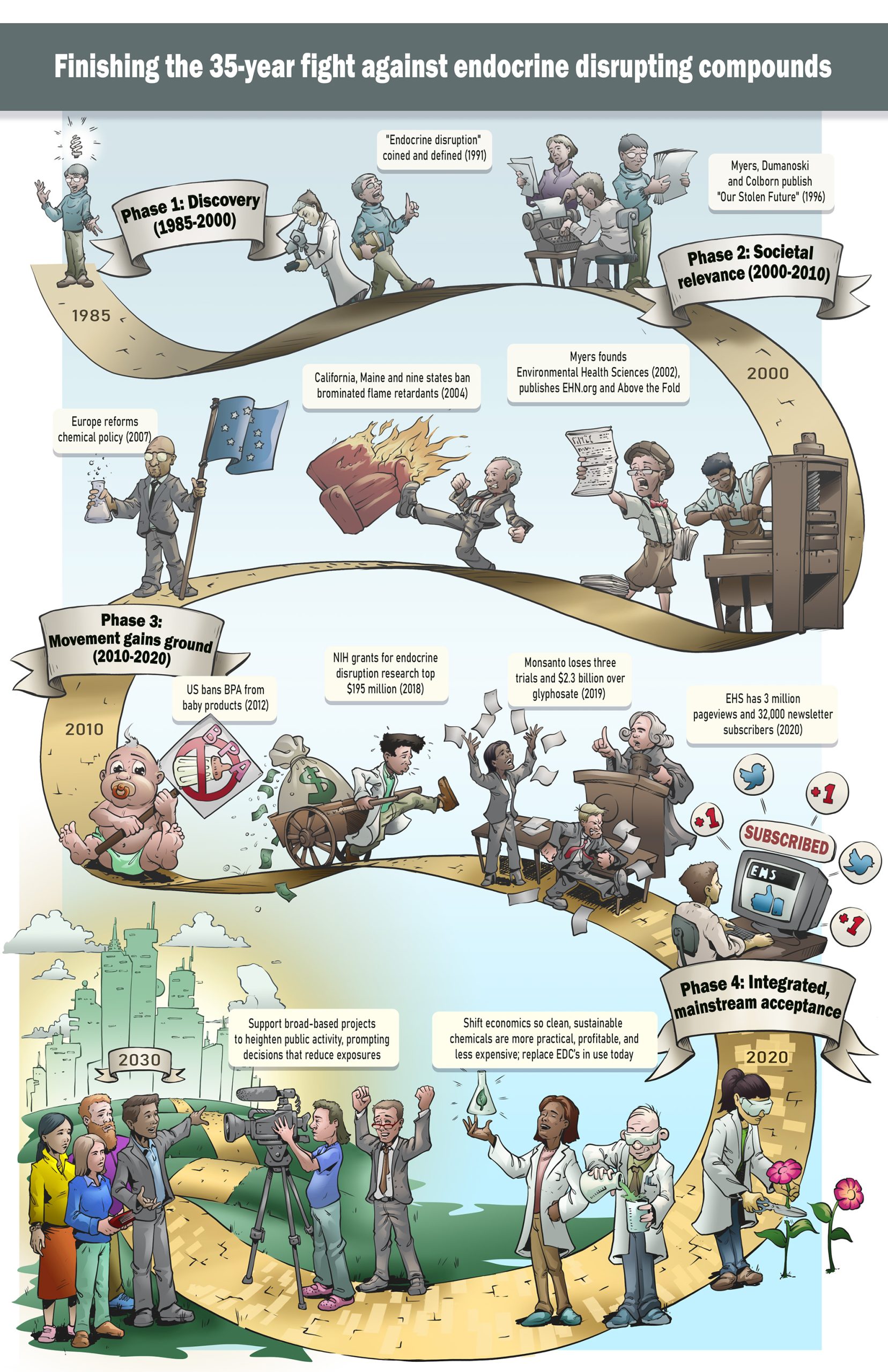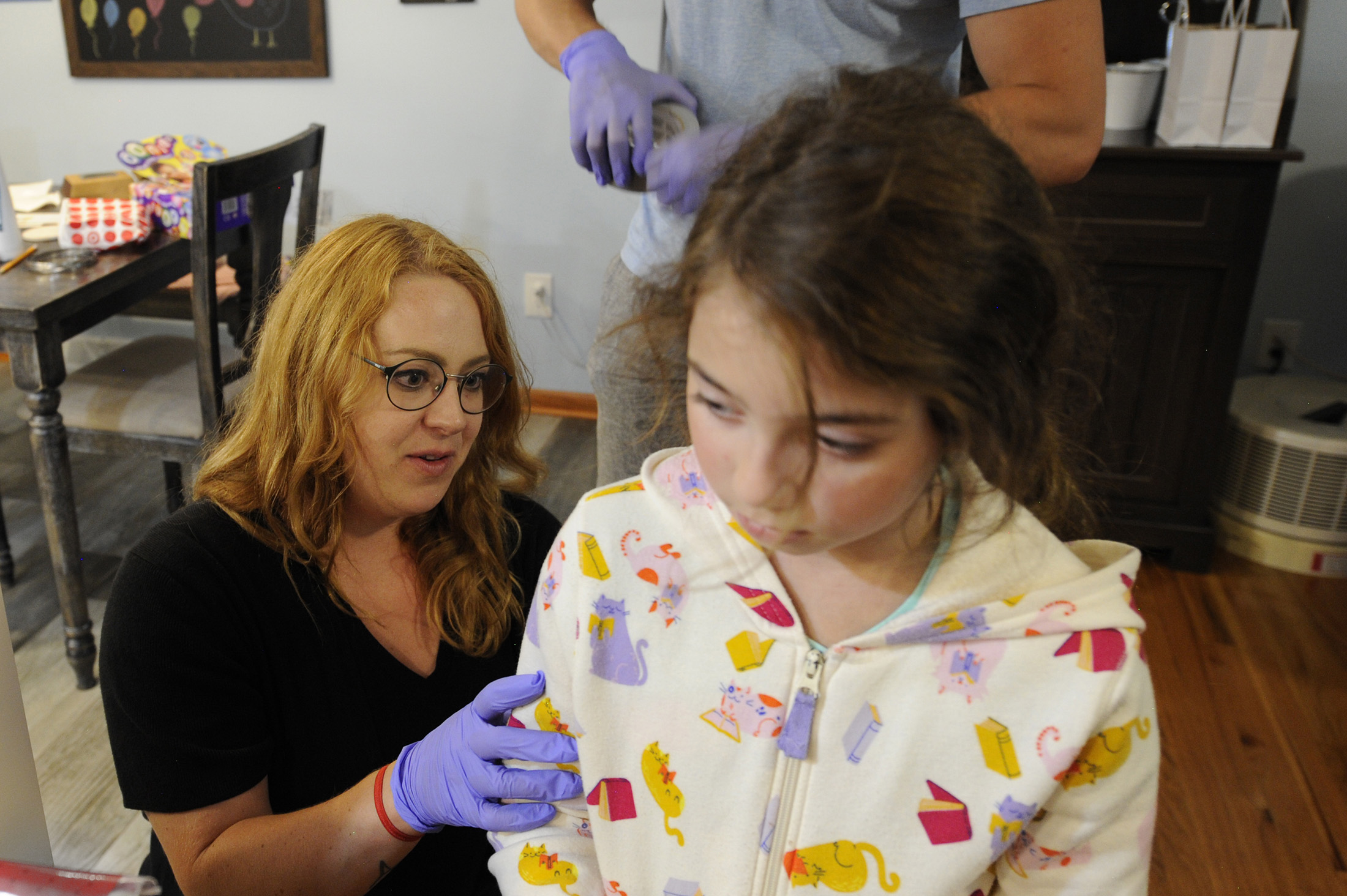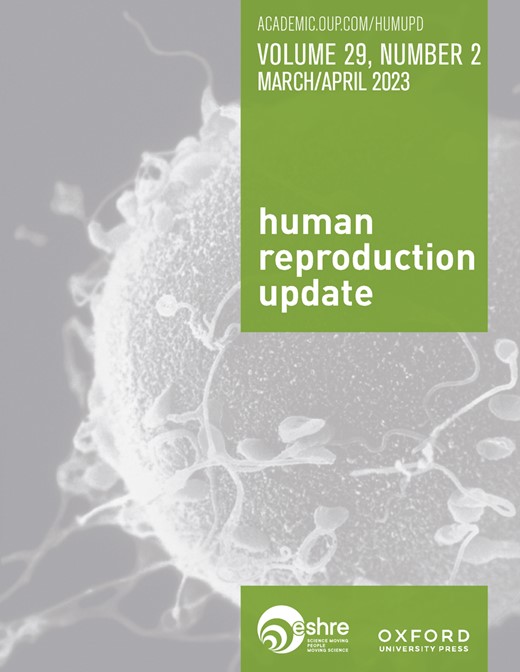Change starts with science
Here’s how we’re pushing it forward
EHS has spent two decades increasing the quality and quantity of mainstream coverage on important science about our health and environment. Twenty years ago, stories about such issues rarely appeared in the top national newspapers; when they did, they often were hostile. In the past 10 years we have seen many positive developments:
- New York Times columnist Nicholas Kristof writes regular columns involving our work; he has cited Pete Myers, our chief scientist, twice.
- Top reporters at major media outlets now come to us for story ideas and to help them understand the context and implications of new scientific findings..
- A proliferation of news outlets focusing on our environment and health that give investigative reporters strong platforms to investigate and shed light on industry practices and current science. The bright lights include Sharon Lerner at The Intercept and Carey Gillam at US Right to Know.
- EHN.org (Environmental Health News) publishes three to five original stories per week featuring new scientific discoveries and other breaking news. Those stories have seen almost 1.7 million page views so far in 2019, get republished in other media outlets, and are spread far and wide via social media.
EHS has helped drive improvements in how mainstream media covers environmental health science. The steady appearance of media coverage of new results in the environmental health sciences has created a wave of political pressure for change. EHS’s efforts have played a central role in this creation.
This pressure had yielded important policy advances in many states around the country – and internationally:
- In April, the European Parliament voted 447-14 to urge European regulators to act with all possible haste on endocrine-disrupting compounds, using language drafted by Myers and others he helped coordinate.
- In July Austria banned the herbicide glyphosate.
- In September Denmark banned PFAS chemicals in food packaging.
EHS has helped teach scientists how to better communicate. Myers serves as chair of the Science Communication Network, dedicated to supporting environmental health scientists in their efforts to contribute to public dialogue. EHS has partnered with Advancing Green Chemistry and Harvard University to engage scientists in public communication.
EHS has added to the scientific literature. EHS chief scientist Pete Myers has published more than 120 peer-reviewed articles. His most recent include a ground-breaking 2018 study looking at the connections between bisphenol-A exposure and diabetes in the Journal of the Endocrine Society, and a 2017 article on scientific challenges in the risk assessment of food contact materials in the journal Environmental Health Perspectives.
Read a foreword titled “Toward deep structural reform of herbicide regulation” Myers has written for the 2021 book edited by Drs. R Mesnage and J Zaller (Herbicides: Chemistry, Efficacy, Toxicology and Environmental Impact) published by Elsevier.
In 2006 Fischer published a peer-reviewed article about a California family’s exposure to brominated flame retardants in Environmental Health Perspectives. That article has been cited 147 times in other research.
It’s fascinating work. We’re proud to play a key role.
History of EDC Science

Advancing science for better health
Healthy Environment and Endocrine Disruptor Strategies – HEEDS is a non-profit multidisciplinary coalition of scientists dedicated to improving communication, coordination and collaboration in the endocrine disruption field. HEEDS is developed by scientists for scientists. It operates via an advisory board. There are no memberships or fees. HEEDS is open to ideas that can help move endocrine disruption science forward, increase collaborations across scientific disciplines, and communicate results to the general public and in the policy arena.
Action Science
Environmental Health Sciences seeks to improve human health by reducing “hormone hacking” exposures in concerned populations, through rapid, scientifically sound, targeted interventions.
We promote results using novel, generationally relevant messaging that maximizes risk perception and leads to action in behavior and policy.
Our approach:
- Work with communities to identify health concerns tied to toxic exposures
- e.g., breastfeeding moms, infertile couples, fenceline communities
- Use scientifically sound interventions to rapidly determine exposure levels, reduce those exposures, and demonstrate benefits to reduced risk of exposure to harmful pollutants.
- Broadcast results widely to affected communities through provocative engagement.
- Build pressure and influence change agents through targeted messaging and engagement with regulatory, religious, business/finance, and community leaders
EDC Factsheets





Important scientific papers

Atrazine induces complete feminization and chemical castration in male African clawed frogs.
By Tyrone Hayes et al. Proceedings of the National Academy of Sciences, March 9, 2010.


